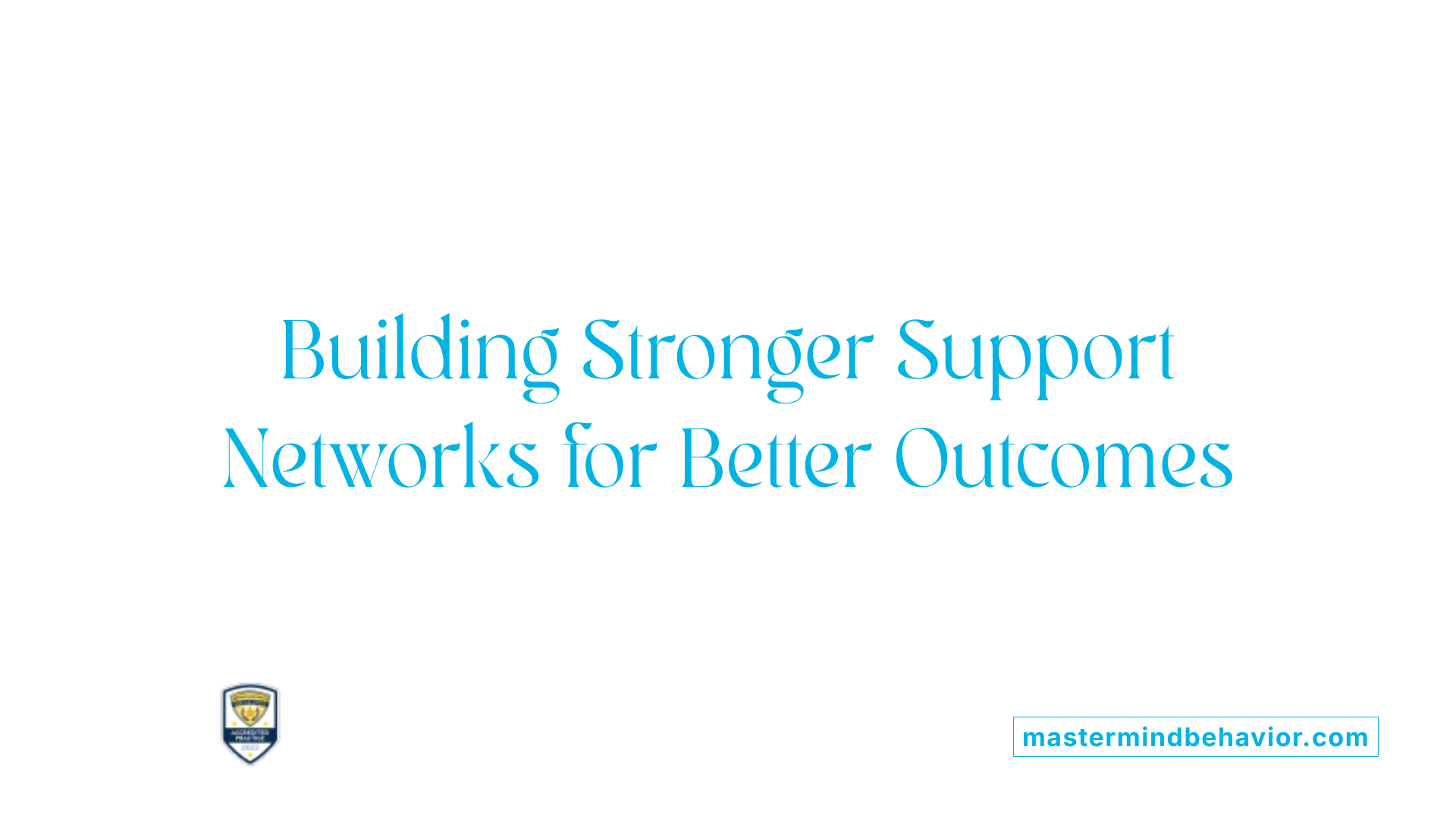How Culture and Diversity Impact ABA Therapy Outcomes

Understanding the Intersection of Culture and ABA Therapy
Applied Behavior Analysis (ABA) therapy is a foundational approach in supporting individuals with autism spectrum disorder (ASD), focusing on improving communication, social skills, and daily functioning. However, the effectiveness of ABA therapy is deeply influenced by cultural and diversity factors. This article explores how cultural competence, inclusion of family and community, tailored interventions, and evolving therapeutic methodologies impact ABA therapy outcomes, highlighting the importance of respecting and integrating diverse cultural backgrounds for better results.
What is Applied Behavior Analysis (ABA) Therapy?
What is Applied Behavior Analysis (ABA) therapy?
Applied Behavior Analysis (ABA) therapy is a scientific approach that focuses on learning and behavior. Its main goal is to help individuals with autism spectrum disorder (ASD) develop important social, communication, and learning skills. ABA therapy looks closely at how behavior changes in response to the environment.
Techniques used in ABA therapy
ABA uses several techniques to teach and reinforce new skills, including positive reinforcement, prompting, and analyzing the Antecedent-Behavior-Consequence (ABC) framework. These strategies help increase desired behaviors while reducing unwanted ones. Examples of ABA methods include Discrete Trial Training (DTT) and Pivotal Response Treatment (PRT), which shape learning step by step.
Role of family and caregivers
Family members and caregivers play a vital role in ABA therapy. Therapy programs are tailored to each individual and often involve training families to support skill development in everyday settings such as home or community. This cooperation helps ensure skills learned during therapy are practiced and generalized.
Scientific basis and evidence supporting ABA
ABA therapy is backed by extensive research showing that early and intensive interventions can significantly improve language, social skills, cognition, and adaptive behaviors in individuals with ASD. These positive outcomes demonstrate ABA's effectiveness as a treatment method.
Overall, ABA therapy provides a personalized, evidence-based pathway to help children and individuals with autism lead more successful and independent lives.
How Culture Shapes ABA Therapy Delivery

What Is the Role of Cultural Competence in ABA Therapy?
Cultural competence is essential in delivering Applied Behavior Analysis (ABA) therapy as it ensures that treatment is respectful and inclusive of families' diverse cultural beliefs, behaviors, and traditions. When therapists demonstrate cultural sensitivity, therapy becomes more effective because it aligns with the family's values and way of life.
How Can Therapists Understand Families' Cultural Beliefs and Traditions?
Therapists are encouraged to begin by actively listening and asking thoughtful questions to learn about families' goals, significant holidays, customs, traditions, and daily routines. This information helps tailor intervention plans to fit naturally within the family's lifestyle, enhancing engagement and outcomes.
Why Is Therapists' Cultural Self-Awareness Important?
Recognition of one’s own biases and ongoing reflection on assumptions is vital for unbiased, client-centered therapy. A therapist who reflects on their beliefs can avoid imposing them and instead provides support rooted in the family's cultural context.
How Are Culturally Relevant Communication and Gestures Incorporated?
Interventions should adapt to include culturally appropriate communication styles, phrases, and social greetings such as bowing or handshakes, depending on the family's background. This adaptation fosters trust and comfort, making therapy sessions more successful and respectful.
Family and Community Engagement in Diverse Cultural Contexts

Family-Centered Collaboration in ABA
Effective ABA therapy frequently depends on collaboration that centers around the family, recognizing them as crucial partners. This approach involves open communication where therapists actively listen and learn about the family's unique cultural background, beliefs, and daily life.
Involving Extended Family and Community Resources
Beyond the immediate family, embracing extended relatives and community resources like faith groups enhances the therapy's relevance and acceptance. Incorporating these supports helps build a network that respects cultural values and practices, making the intervention more meaningful and sustainable.
Cultural Context: Korean Immigrant Families
For example, Korean immigrant families often rely heavily on community and religious support. Integrating these cultural elements into ABA therapy not only respects their traditions but also improves the therapy's effectiveness by aligning it with their support systems.
Benefits of Including Cultural Supports in Therapy
By embedding culturally relevant communication styles, greetings, and customs, therapists foster a welcoming environment that reduces barriers. This inclusivity promotes better engagement and outcomes, as families feel valued and understood, leading to more tailored and effective interventions.
Addressing Language and Cultural Barriers for Latino Families

What cultural and language challenges do Latino families face in ABA therapy?
Latino families often encounter significant barriers when accessing Applied Behavior Analysis (ABA) services for children with Autism Spectrum Disorder (ASD). Language differences can hinder full communication between therapists and families, while cultural nuances related to traditions, communication styles, and family involvement may be overlooked in therapy plans.
What have surveys and interviews revealed about these challenges?
A comprehensive study involving surveys, interviews, and focus groups with Latino families in Nevada uncovered specific obstacles they face. These included limited availability of Spanish-speaking therapists, lack of culturally tailored resources, and insufficient recognition of cultural values that influence family dynamics and therapy engagement.
How can practitioners bridge these gaps and improve ABA service quality?
To enhance therapy outcomes for Latino families, therapists are encouraged to actively listen and ask detailed questions about families' goals, daily routines, and cultural customs. Adapting interventions to include culturally relevant communication—such as greetings and social gestures—and involving extended family and faith-based community resources fosters collaboration and acceptance. Recognizing and addressing therapists’ own cultural assumptions further promotes unbiased, family-centered care.
Why is cultural understanding important in improving therapy outcomes?
Integrating cultural context improves the effectiveness of ABA therapy by ensuring interventions resonate with the family's values and lifestyle. Understanding the reliance on community and religious support within Latino families, for instance, allows therapists to tailor strategies that align with family priorities. The research underscores that addressing both language and cultural factors significantly enhances the inclusivity and success of ABA services for diverse populations.
Benefits and Limitations of ABA Therapy for Autism
How does ABA therapy benefit individuals with autism?
ABA therapy supports individuals with autism by encouraging positive behaviors and skills, including communication, social interaction, and self-care. Through a science-based and personalized approach, it uses techniques like positive reinforcement to create learning experiences tailored to each person's needs. This leads to improvements in language, attention, memory, and independence across ages.
Early and intensive ABA interventions have shown particular success in boosting socialization and communication abilities, contributing to significant developmental gains. Moreover, ABA empowers families and caregivers by teaching them strategies to support their loved ones' learning and manage behaviors effectively in everyday life. This collaborative approach enhances overall quality of life and community participation.
Is ABA therapy suitable for all individuals with autism?
While many people with autism benefit from ABA, the therapy is not one-size-fits-all. Its effectiveness depends on the individual's unique requirements, preferences, and life stage. Qualified professionals are essential to tailor interventions ethically and respectfully, prioritizing the individual's autonomy.
Some historical ABA practices have been criticized for causing harm, prompting modern approaches to focus on trauma-informed, person-centered care that values autistic voices and neurodiversity. The neurodiversity perspective challenges the idea of "curing" autism, advocating acceptance and quality of life improvements instead.
Therefore, ABA therapy is beneficial for many but not universally appropriate. Families and practitioners should also consider alternative supports aligned with autistic self-advocacy and community values, ensuring therapy respects cultural backgrounds and individual dignity.
Who Provides ABA Therapy and Why Cultural Awareness Matters

Who typically provides ABA therapy for autism?
ABA therapy is generally delivered by licensed and certified professionals specializing in behavioral analysis and autism interventions. These include Board Certified Behavior Analysts (BCBAs), Registered Behavior Technicians (RBTs), and other trained therapists working within specialized clinics or agencies.
Medical and mental health professionals such as neurologists, psychiatrists, and psychologists often play an essential role by performing evaluations and guiding individualized treatment plans. Referrals to ABA services usually come through managed care plans or specialized programs, ensuring that therapy is coordinated effectively.
ABA therapy often requires prior authorization and is covered under healthcare programs like Apple Health (Medicaid), making access possible for eligible families.
Why is cultural competence important among ABA providers?
The cultural competence of ABA therapists significantly impacts the inclusiveness and success of treatment. Providers who respect and incorporate families’ cultural beliefs, customs, and daily routines can tailor interventions that resonate more deeply with clients.
By listening to families and asking about their cultural goals, traditions, and communication styles, therapists build trust and collaboration. Recognizing their own biases and reflecting on assumptions helps maintain client-centered, unbiased care.
Cultural awareness also involves adapting therapy practices, such as using culturally relevant greetings or gestures, and engaging extended family and community supports like faith groups. These strategies enhance the relevance and acceptance of the therapy.
The connection between provider training and therapy outcomes
Providers trained in culturally sensitive approaches and advanced ABA techniques tend to achieve better outcomes. Incorporating family-centered collaboration and cultural context ensures that treatments fit the unique backgrounds of diverse populations.
Overall, therapists with specialized training who adopt culturally competent methods can significantly improve the efficacy of ABA therapy for children with autism, making treatment more personalized and effective.
Advancements in ABA: Relational Training and Cultural Adaptation
What are the different ABA methodologies and their outcomes?
Applied Behavior Analysis (ABA) therapy is a well-established intervention for autism spectrum disorder, but different methodologies within ABA can yield varied outcomes. Traditional ABA (TAU) focuses primarily on discrete skills training, while more recent approaches like Relational Training (RT) emphasize relational responding, fostering flexible language and cognition.
How do Relational Training (RT) and Relational Frame Theory (RFT) contribute?
RT is grounded in Relational Frame Theory (RFT), which aims to develop the ability to relate concepts in flexible ways. This deeper cognitive engagement goes beyond basic verbal operants, supporting broader learning and adaptability.
What are the benefits of RT in cognitive, adaptive behavior, and autism severity improvements?
Research including a randomized controlled trial with 73 school-age children found that RT produced larger gains in IQ compared to traditional ABA. Beyond cognitive improvements, RT also contributes to enhanced adaptive behavior and reductions in autism severity. This suggests RT may support more comprehensive development in children with autism.
Can culturally adapted relational training enhance therapy effectiveness?
Integrating cultural competence into ABA therapy, including RT, by respecting families’ customs, communication styles, and social greetings, helps make interventions more relevant and accepted. For example, culturally adapting relational training approaches—such as incorporating culturally specific communication methods—may further improve engagement and outcomes. Collaboration with families and their communities amplifies these benefits, especially for diverse populations facing language and culture barriers.
This combination of innovative behavioral methods and culturally sensitive practices represents a promising advance in the delivery of ABA therapy.
Integrating Culture for Optimal ABA Therapy Outcomes
Cultural diversity profoundly influences the effectiveness of ABA therapy for autism. Successful interventions require more than just scientifically validated techniques—they hinge on therapists’ cultural competence, sensitivity to family values, and active engagement of community resources. By understanding cultural backgrounds, addressing language barriers, and adopting evolving therapeutic approaches such as relational training, providers can tailor ABA therapy to meet diverse needs. Ultimately, honoring culture and fostering inclusive, personalized care not only improves therapy outcomes but also supports the dignity and empowerment of individuals with autism and their families.
References
- Beyond Behavior: Respecting Culture in ABA Therapy
- Understanding the Role of Cultural Values in ABA Service ...
- Randomized-controlled trial examining differing content of ...
- Applied Behavior Analysis (ABA)
- Applied Behavior Analysis (ABA)
- Applied Behavior Analysis in Children and Youth with Autism ...
- Applied Behavior Analysis (ABA) for Children With Autism
- Applied Behavior Analysis (ABA)
- The Top 10 Reasons Children With Autism Deserve ABA
Recent articles

How ABA Therapy Encourages Healthy Risk Assessment Skills
Enhancing Decision-Making and Safety Awareness Through ABA Therapy

How ABA Therapy Improves Classroom Group Participation
Enhancing Classroom Dynamics Through Applied Behavior Analysis

ABA Therapy To Reduce Disruptions During Group Activities
Enhancing Group Participation: The Role of ABA Therapy in Managing Behavioral Disruptions

How ABA Therapy Encourages Safe Risk Taking In Community Settings
Empowering Autistic Individuals Through Structured Community Engagement

How ABA Therapy Encourages Initiative In Social Conversations
Unlocking Social Confidence: The Role of ABA Therapy in Fostering Conversation Skills

How ABA Therapy Improves Participation In Family Activities
Enhancing Family Bonds Through Applied Behavior Analysis Therapy



